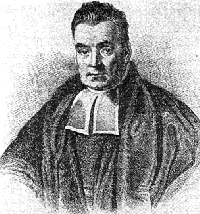Kristian Seip: Harald Cramér and randomness in the distribution of the primes

Sted: Lunsjrommet i 13. etg., Sentralbygg 2
Tid: Fredag 26. mai 2023 klokken 12:15–13:00
Harald Cramér (1893-1985), one of the giants of modern statistics, did remarkable work on the distribution of the prime numbers in the 1920s and 1930s. Cramér’s research, developing probabilistic ideas and a statistical approach to the size of gaps between consecutive primes, has had a profound influence on how people think about the distribution of the primes. We will look at Cramér’s contributions, with special emphasis on Cramér’s conjecture on prime gaps and the probabilistic model on which it is based.
Gunnar Taraldsen: Bayes’ theorem: history - importance - philosophy

Sted: Lunsjrommet i 13. etg., Sentralbygg 2
Tid: Fredag 3. mars 2023 klokken 12:15–13:00
Bayes' theorem is a fundamental concept in probability theory and statistics that provides a way to update our beliefs or estimates about the likelihood of an event, given new evidence or information. The theorem was first introduced by the Reverend Thomas Bayes, an 18th-century English statistician and theologian, but its full significance was not appreciated until the 20th century, when it became an essential tool for scientific research, particularly in fields such as genetics, finance, and machine learning.
The previous is the first part of the answer given by ChatGPT to the question: "Can you provide a short text that explains the history and importance of Bayes theorem? Is Bayes theorem used in your algorithm?". I will explain this in more detail with a focus on the history, the importance, and the philosophy.
The original essay by Bayes was published posthumously in 1763 and contained the first statement and proof of Bayes' Theorem. It was published by Richard Price, a Welsh moral philosopher and mathematician. Bayes theorem is not only important in statistics, but also more generally as indicated by the title A Method of Calculating the Exact Probability of All Conclusions founded on Induction on the 50 offprints ordered by Price of the original essay.
The presentation will be mostly non-technical, but results connected to the theory of Kolmogorov and Rényi will be mentioned.
Slides
Bayes' Theorem: A Historical Overview
Bayes' Theorem: A Historical and Modern Perspective
Bayes' Theorem: History–Importance–Philosopy
The use of improper priors in Bayesian inference
Nils Baas: The topology of brain cells

Sted: Lunsjrommet i 13. etg., Sentralbygg 2
Tid: Fredag 10. februar 2023 klokken 12:15–13:00
I will discuss how topological data analysis is being used to determine the state space of a population of grid cells in rat brains. These methods can also be used to study how single cells' local behaviour leads to global behaviour. Suggestions for future work will also be discussed.
Harald Hanche-Olsen: Buckingham’s magical pi theorem (how to get a free lunch)

Sted: Lunsjrommet i 13. etg., Sentralbygg 2
Tid: Fredag 4. november 2022 klokken 12:15–13:00
Why is the period of a pendulum proportional to the square root of its length? Why do ocean waves travel at a speed proportional to the square root of the wave length? And how do you compute the released energy of an explosion by observing the fireball?
The hard way to answer these and many similar questions is to model the phenomena and solve the model. But there is an easier way, known as dimensional analysis. It has been used informally for a long time, but the theory was put on a firmer footing by Edgar Buckingham in 1914.
The fundamental idea behind dimensional analysis is simple: Any equation properly describing a physical phenomenon must look the same in every coherent system of units. Changing the units rescales the numerical value of the variables of the equation, and so the equation is invariant under a certain group of rescaling transformations. And this rescaling invariance leads to a very simple principle constraining the form of the equation.
In this talk, I will explore the meaning of terms like “coherent system of units”, “quantity dimensions”, and explain how Buckinghams pi theorem follows.
This is just one of many ways in which you get something “for free” from symmetries in physics. Another way is Noether's theorem, associating conserved quantities with one parameter groups of symmetries of the Lagrangian. It is unclear, however, if the margins of the present talk are wide enough to allow a look into this fascinating topic.
Carl Haakon Waadeland: Swingende kurver og rytmiske sirkler

Sted: Lunsjrommet i 13. etg., Sentralbygg 2
Tid: Fredag 26. august 2022 klokken 12:15–13:00
En oppfatning av en intim kopling mellom musikk og matematikk har eksistert siden antikken. På bakgrunn av studier mellom strengelengde og tonehøyde så Pythagoras musikk som en klingende realisering av matematikk. – Jeg vil her presentere en teoretisk modell som simulerer forskjellige rytmeframføringer. Modellen er basert på frekvensmodulasjon, og det vil bli gitt musikalske eksempler på hvordan frekvensmodulerte rytmer høres ut. I tillegg vil jeg vise hvordan forskjellige rytmiske ostinat kan representeres på en sirkel, og peke på en geometrisk ekvivalens mellom en afrikansk bjellerytme og en skala.